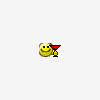-
Welcome to the eG Forums, a service of the eGullet Society for Culinary Arts & Letters. The Society is a 501(c)3 not-for-profit organization dedicated to the advancement of the culinary arts. These advertising-free forums are provided free of charge through donations from Society members. Anyone may read the forums, but to post you must create a free account.
How do you organize your cookbooks?
-
Similar Content
-
- 393 replies
- 122,048 views
-
- 1,817 replies
- 360,529 views
-
- 228 replies
- 48,975 views
-
- 339 replies
- 80,303 views
-
- 80 replies
- 28,040 views
-
-
Recently Browsing 0 members
- No registered users viewing this page.






Recommended Posts